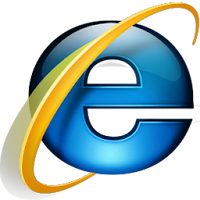
Research suggests that Windows 7 is not going to give the PC market much of a lift when it makes its retail appearance on 22 October. My contrary opinion is based on a survey of only one user, but I get the impression from Ask Jack emails that I won't be the only person shopping for a new laptop when Windows 7 appears.
Buying a portable Windows machine can be a bit of a challenge, because there is so much choice. There are hundreds if not thousands of suppliers, and some of them offer two dozen different models. The trick is to know what sort of laptop you want. To simplify things a bit, there are roughly six classes of portable PC: netbooks, "value" systems, mainstream notebooks, ultraportables, desktop replacements and gaming systems.
Most netbooks today have Intel Atom processors with 1GB of memory, a 10in screen and Windows XP. Some will appear running the cheaper Windows 7 Starter Edition, which you can't buy in the shops. If buying a netbook, make sure you can upgrade it to 2GB, and do that as soon as possible. You will also be able to upgrade the version of Windows 7 "in place" — at a price.
Netbooks are not designed for serious computer work, such as sound and image processing, or playing games. They are intended mainly for use with web-based applications, as the name implies. They do that well, but they don't do everything.
"Value" or "entry level" systems have low-end specifications, and low prices. You can buy them in supermarkets and high street shops, typically for £249 to £399. They're bigger, heavier and more powerful than similarly priced netbooks, and have built-in DVD drives.
Mainstream notebooks have mainstream specifications (Intel Core 2 Duo etc) and offer more power and functionality for the extra price. Most cost between £499 and £999 depending on how good the graphics are, and whether you get a Blu-ray drive instead of a DVD writer. If you're buying one for Windows 7, go for the 64-bit version with 4GB of memory and, for preference, DirectX 11 graphics.
Ultraportables are "road warrior" machines, designed for light weight and long battery life, and tend to leave out the optical (CD/DVD drive). The processor of choice is an Intel CULV (Consumer Ultra Low Voltage) chip, but go for a Duo rather than a Solo. Screens are typically 12 inch standard or 13-14 inch widescreen, and prices range from about £600 to £1,200.
Desktop replacements are intended to have roughly the same power as desktop PCs, but they can be very heavy and most have poor battery life. (Mostly they'll be used at home, on the mains.) The high-end models may have quad-core processors, 17in screens, Blu-ray drives and stereo speakers. The ones that stress the movie-playing (and, sometimes, games-playing) features are often called "entertainment notebooks": for example, Toshiba's Qosmio range.
Gaming machines are like desktop replacement notebooks but with high-end performance and, especially, fast graphics. Leading brands include Alienware (owned by Dell) and Voodoo (owned by HP), but there are also independent suppliers. Although the specification is generally the key feature of a PC, the bigger suppliers also divide the market by price. Dell, for example, has the Inspiron range for price-conscious buyers, then the stylish Studio range models for the more aspirational mainstream, with XPS as a luxury brand. It also has a Vostro "value range" aimed mainly at businesses.
The huge Windows PC ecosystem also supports many more specialised machines – handheld systems, touch-screen tablets, convertibles that work both as traditional notebooks and tablet PCs, ruggedised machines for military and similar uses, and PCs designed for certain industries such as education and health services.
However, you should find it easier to choose a portable PC if you decide what kind of system you want, and ignore the ones that don't fit your chosen category








 Bing, Microsoft's new search engine, has had several weeks to prove its worth. It's proved popular, picking up market share from both Yahoo and Google to become the second most used search service on the web.
Bing, Microsoft's new search engine, has had several weeks to prove its worth. It's proved popular, picking up market share from both Yahoo and Google to become the second most used search service on the web.










